Range Rover! Ring any bells? If your answer is ‘no’ then either you are an alien or there is some serious problem with your memory. Because Range Rover isn’t something to forget about. Thanks to the abundant features that Range Rover vehicles offer and the appeal they enjoy, they Range Rover successfully rules the hearts of people.
If we turn the pages of history, we come to know that Range Rover was introduced by a British company in 1970. And since then Range Rover enjoys a reputation of the best SUV maker around the world. Range Rover has an expertise in fashioning wonderful executive vehicles.
Range Rover vehicles are categorized into 4 generations. The first generation of Range Rover vehicles came out between 1970 and 1996. The second generation of Range Rover vehicles manufactured between 1994 and 2002. 2002 was the year when the manufacture of third generation Range Rover vehicles started and 2012 was the year when it ended. Since 2012 until now, fourth generation Range Rover vehicles are being produced and run.
In these 48 years, Range Rover has seen many major upgrades in each and every aspect and engines are no exception. Range Rover engines are a class apart from other automakers’ engines. Therefore, it is imperative to know about the engines Range Rover has been equipping its vehicles with. Although Range Rover comes with reliable engines, still if you need a replacement, used and reconditioned Range Rover engines are easily available.
Contents
- 1 Range Rover Velar Proto type Engine (1969)
- 2 3 Door Range Rover Engine (1970)
- 3 4 Door Range Rover (1981)
- 4 Second Generation Range Rover Engines (1994)
- 5 Third Generation Range Rover Engines (2001)
- 6 Range Rover Sport Engines (2005)
- 7 Range Rover Evoque Engine (2011)
- 8 Fourth Generation Range Rover Engines (2012)
- 9 New Range Rover Velar Engines (2017)
Range Rover Velar Proto type Engine (1969)
When Range Rover fashioned its first prototype, it wanted to keep it secret fearing that someone would steal the idea. Therefore, they named it Velar which translates to veil.
It is said that the engine that was installed in the prototype was a V8 engine despite the fact that it was a trial car. This V8 engine was 3.5litre petrol engine and it generated enough power to accelerate the vehicle from 0 to 60mph under 15 seconds. The car was able to stage a max speed of 100 miles per hour. These V8 engines were eventually replaced by the TDi turbo diesel engines.
3 Door Range Rover Engine (1970)
The successful experiment of Range Rover Velar paved the way for the first official launch of Range Rover.After the successful endeavor of Range Rover Velar, the Range Rover stunned the masses a great deal and earned itself a widespread recognition. It was also the first ever vehicle capable of 4×4 drive.
This Range Rover was armed with a 3528cc V8 engine mated with an innovative car burettor known as Zenith, which was designed to supply a mixture of air and petrol to every bank. Moreover, this V8 engine was capable to generate 132bhp coupled with 5000rpm.
4 Door Range Rover (1981)
It took more than 11 years for Range Rover to introduce another model in the market. It was a 4 Door Range Rover in 1981 and termed now as Range Rover Classic. It added a lot more appeal to the already loved brand of Range Rover.
The authorities at Range Rover worked with Perkins to initiate a project known as Iceberg. It was an endeavour to manufacture a diesel engine variant of the 3.5-litre V8 petrol engine. A turbocharged engine was also produced under the same banner, however, this ended up as a failure and the project ceased. But all was not lost as a 4.2 litre petrol engine was successfully chalked out manufactured by this project.
Second Generation Range Rover Engines (1994)
1994 was the year when the production of second generation Range Rover vehicles was initiated. This generation was a lot better than the previous ones as it offered improved luxury and performance.
Second generation was equipped with 300Tdi diesel engine under its bonnet. It was an upgrade from V8 petrol engineand offered better performance and proficiency. This 300Tdi engine had 2.5L capacity and 4 cylinders. It produced an output of 111brake horse power.
Third Generation Range Rover Engines (2001)
The secret of the success of Range Rovers is that it keeps on improving everyb single day. And the Range Rover third generation is the epitome of the same. The exterior of the third generation Range Rover vehicles had inspiration from an Italian speedboat Riva.
The third generation Range Rover vehicles mostly came in the market with BMW’s 4.4 litre M62 V8 engine. This generation also phased out the manual transmission and adopted automatic transmission. Later on, Range Rover third gen vehicles were equipped with a5.0Litre supercharged engines.
Range Rover Sport Engines (2005)
Range Rover introduced its first sports SUV in 2005. It came with several innovative technologies which made it a hit among the drivers and passengers. Range Rover Sport can be renamed as ‘Beast inside Beauty’.
The Range Rover Sport is run by a 4.2 litre supercharged petrol engine made of aluminium. It is also known as Jaguar V8 engine. It generates a whopping 390hp mated with 550 Nm torque. This is a very light weight engine which in turn reduced the weight of the vehicle. A 3.6 litre twin turbo diesel TDV8 engine was also installed in the later models.
Range Rover Evoque Engine (2011)
Range Rover introduced the all new model named as Evoque in 2011. It won the title of ‘car of the year’ approved by several auto experts. Even a look at Evoque can make you fall in love with it, let alone driving it.
Range Rover Evoque was offered with three different engines variants. After some time, the Range Rover manufactured Ingenium Turbocharged Engine itself. As things stand now, Evoque is now accessible in three 2-litre alternatives. An eD4 148bhp turbo diesel engine, a TD4 with 178bhp power train engine and a Si42-litre 237bhp turbocharged petrol engine.
Fourth Generation Range Rover Engines (2012)
Fourth generation Range Rover vehicles are aluminium-made light weight vehicles and brag an extended wheelbase and floating roof. It is also equipped with Land Rover’s Terrain Response system.
Range Rover’s fourth generation were offered with the option of a couple of petrol engines i.e. 5.0-litre 3 LR-V8 and LR-V8 Supercharged engines. Moreover, two diesel engines were also offered i.e. 3.0-litre TDV6 engine and 4.4-litre SDV8 engine. An eight-speed automatic transmission was mated with these engines.
New Range Rover Velar Engines (2017)
Range Rover Velar is back again after 47 years and this one is a hell lot better than its predecessor and why won’t it be? This SUV has raised the bar for SUVs and provided the people with technology, comfort, luxury, performance and efficiency all at one place.
If we talk about the engines of Range Rover Velar, there is variety of engines both diesel and petrol. The range starts with a 2.0-litre diesel engine generating 178bhp. The range topping diesel engine generates a staggering 296bhp. The petrol engine range starts from 2.0 litre, four-cylinder 296bhp petrol engine. However, the best of the range is a 3.0 litre supercharged petrol engine which generates 375bhp to accelerate the Velar from 0 to 62mph under 5.7 seconds.

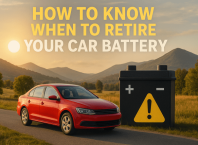
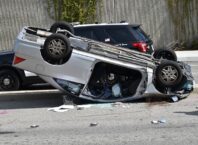
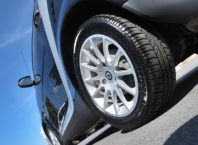
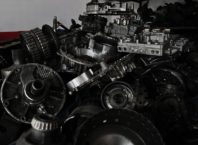
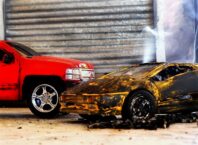







This is one of the best info about the range rover engine history.
Thank you Rohan for reading our article.
Keep Reading.